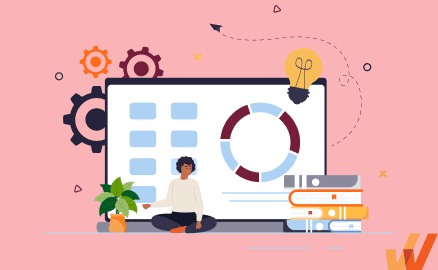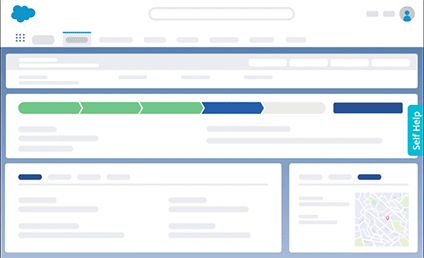

Disha Gupta


In today’s competitive business landscape, organizations continually strive to attract and retain top talent. As a result, the focus on employee onboarding has intensified, emphasizing its critical role in shaping a new hire’s journey within the company. While traditional onboarding processes have long been recognized for their importance, a new approach has emerged to revolutionize the employee integration experience – inboarding.
Inboarding goes beyond mere orientation and induction, aiming to foster meaningful connections, accelerate productivity, and drive long-term engagement. This article delves into the concept of inboarding, exploring its benefits, key elements, and strategies while shedding light on how organizations can harness its potential to create a dynamic and thriving workforce.
Inboarding is an important component of the learning and development strategy. It focuses on creating a positive and inclusive experience for new hires, allowing them to quickly integrate into the organization, understand its culture, values, and objectives, and build strong connections with colleagues and key stakeholders. Inboarding aims to accelerate the learning curve, enhance productivity, and foster long-term engagement by providing ongoing support, resources, and opportunities for growth throughout an employee’s onboarding journey. It recognizes that successful onboarding is not a one-time event but a continuous process that extends beyond the initial few weeks, ensuring a smooth transition and effective integration into the company’s ecosystem.
At face value, inboarding and onboarding share many similarities. By definition, both provide employees with the skills and knowledge they need to succeed in their new roles. Structurally, inboarding involves many of the same steps as onboarding, including the transfer of knowledge, shadowing, real-time training, and mentorship.
However, inboarding helps seasoned team members build on their knowledge and skills to prepare for the next steps within the organization. Because existing employees are already familiar with the company’s culture and general operations, inboarding can be focused on providing cross-training, upskilling, and program awareness.
Onboarding, on the other hand, is aimed at preparing new employees for their journey within an organization that is brand-new to them.
| Aspect | Onboarding | Inboarding |
| Focus | Primarily orientation and administrative processes | Holistic integration, cultural immersion, and development |
| Duration | Typically limited to the initial few weeks | Extended process that continues beyond the early stages |
| Engagement | Initial introduction to the company and its policies | Emphasis on building connections and fostering engagement |
| Integration | Basic introduction to the job role and responsibilities | Deep understanding of company culture and values |
| Learning Support | Limited support and resources provided during onboarding | Ongoing learning and development opportunities |
| Networking | Limited opportunities for networking and relationship-building | Encourages building relationships across the organization |
| Goal | Facilitate a smooth transition into the organization | Create a sense of belonging and maximize long-term success |
As employees grow within an organization, and as organizations themselves change, employers can support their team members through transitions with inboarding. Here are some of the most significant inboarding use cases for organizations.
Pro Tip: Investing in digital technologies such as Whatfix digital adoption platform helps manage tech changes efficiently. DAPs support inboarding by providing in-app guidance on different enterprise applications through a variety of formats, such as step-by-step walk-throughs, balloon tips, videos, and written guides. It also tracks the progress of your change initiative and gathers feedback from your team.

Inboarding is an essential part of establishing continuous learning and employee development initiatives in the workplace. This process improves the quality of employee work, conserves continuity across departments, and reduces costs for the organization.
Inboarding provides employees with the support and community they need to stay with an organization longer. In today’s economy, employees are likely to leave when they don’t feel their needs are being met, costing businesses in terms of money and productivity in the long run. Supporting employees through L&D programs, including inboarding makes them feel engaged and willing to stay and grow within the company.
An effective learning and development program fosters an environment that makes employees feel connected to the organization’s mission, and valued, and leads them to continue pursuing their career goals within the company. Reduced employee turnover lower costs for an organization and preserves the continuity of information and workflows.
With a structured inboarding process, employees can smoothly transition into new roles and adapt to changes within the organization. Inboarding plan lays out clear job descriptions and expectations, including everyday duties, future goals, and straightforward transition processes. Such a plan ensures that employees don’t feel like they’ve been left to figure things out on their own. Instead, they feel confident and eager to forge ahead.
By enacting a well-structured inboarding plan and easing employees through transitions with plenty of support, they become more comfortable and productive in new situations quickly.
Implementing effective L&D initiatives, including inboarding programs, helps employees acclimate quickly to new responsibilities and internal change so they can hit the ground running. Inboarding also shows an organization’s commitment to investing in employees’ career development and overall well-being. This level of investment promotes employee experience, which in turn leads employees to become more productive and committed to doing high-quality work.
Employees who receive the support they need to perform their duties tend to be more satisfied and engaged in their work. A strong inboarding program provides employees transitioning into new roles and working environments with clear expectations, proper training and feedback, and an incorporation of personal career goals to maintain an engaging and supportive environment.
Inboarding programs can be as unique as the organizations that create them, but there are several key components that must be included when developing an inboarding plan.
Prior to the inboarding process, managers responsible for inboarding must identify all the requirements that the team member is expected to learn through the transition. Whether this means learning new technology or adapting to change management, preparation is key. Ultimately, managers and employees must have a clear idea of what the employees’ new roles and responsibilities entail and a designated transition plan for inboarding.
Even though internal hires are well-oriented to the larger organization and its goals, inboarding needs to include an orientation as a starting point. During employee orientation, employees must be provided with an overview of their new roles or organizational changes as well as any necessary information about their new working environment. For instance, if they are moving to a new department, orientation must include a rundown of that department’s purpose, organization, and goals.
After orientation, employees must also go through in-depth training relevant to the change at hand. This training can occur in whatever format fits best, whether that entails eLearning, on-the-job training, traditional classroom lessons, or any other employee training methods.
Throughout and after training, employees and their managers must have opportunities to provide feedback on progress and assess further needs. Employees must be provided with ongoing support to help them fully settle into their new roles or organizational changes.
Providing lines for clear and efficient communication is critical to the success of inboarding programs. Employees must receive clear and consistent information about their expectations in addition to timely feedback from managers. They should also be encouraged to communicate with their managers about any obstacles they run into along the way.
Inboarding programs must be aligned with the organization’s larger values and goals, to help employees understand how they factor into the big picture. This incorporates more of a sense of purpose into team members’ day-to-day activities to further build on employee engagement.
Inboarding strategies may vary based on the needs of the organization or the transition they are intended to address, but there are several steps that must be included across the board.
As with any large-scale project, developing an effective inboarding process requires forethought and preparation. It may go through several iterations before reaching peak effectiveness, improving employee productivity and retention for your organization.
Assemble a team to develop this program by establishing clear paths for internal mobility across job families and levels. If possible, utilize digital training platforms and learning management systems to build out consistent, ready-to-use training materials.
To support employees as they achieve their goals within an organization, it is necessary to establish straightforward definitions of different job levels within the organization and establish the competencies required to move between those levels. These definitions include the required knowledge, skills, and proficiencies required at each level.
If the change that inboarding is addressing has more to do with the company’s culture or organizational structure, clear definitions of those changes and related employee expectations are also necessary.
Once the definitions are set, set pathways for knowledge transfer and training that support employees as they move into their new job levels, duties, or roles. These pathways are curated to match the specific competencies outlined by those standardized definitions of different job levels, changes, and expectations.
When learning and development programs incorporate checkpoints, leaderboards, and other opportunities for employee recognition, employees are much more engaged throughout the process. This leads to improved learning outcomes and employee experience, contributing to the ultimate success of employees and improving the efficiency and quality of their work.
An environment that supports continual employee growth requires the collection and analysis of feedback from both the employees and their managers. Employees require specific and detailed feedback on their performance to continually improve. Build regular opportunities for feedback and recognition into the inboarding process, and be sure to include both constructive criticism and acknowledgment of their successes.
Inboarding is a continuous process that facilitates employees’ growth within an organization. This process provides employees with support as they acquire the knowledge, skills, and training they need to take on new responsibilities and move through changes as they progress and grow with the business.
Implementing a digital adoption platform such as Whatfix can help L&D teams build effective inboarding experiences by incorporating walkthroughs, task lists, and more directly into enterprise applications. This helps users effortlessly switch from one tool to another, adapt any application to its full potential, and receive the continuous support they need to accept organizational change.
Schedule a free demo with us to learn more about Whatfix DAP!

Thank you for subscribing!